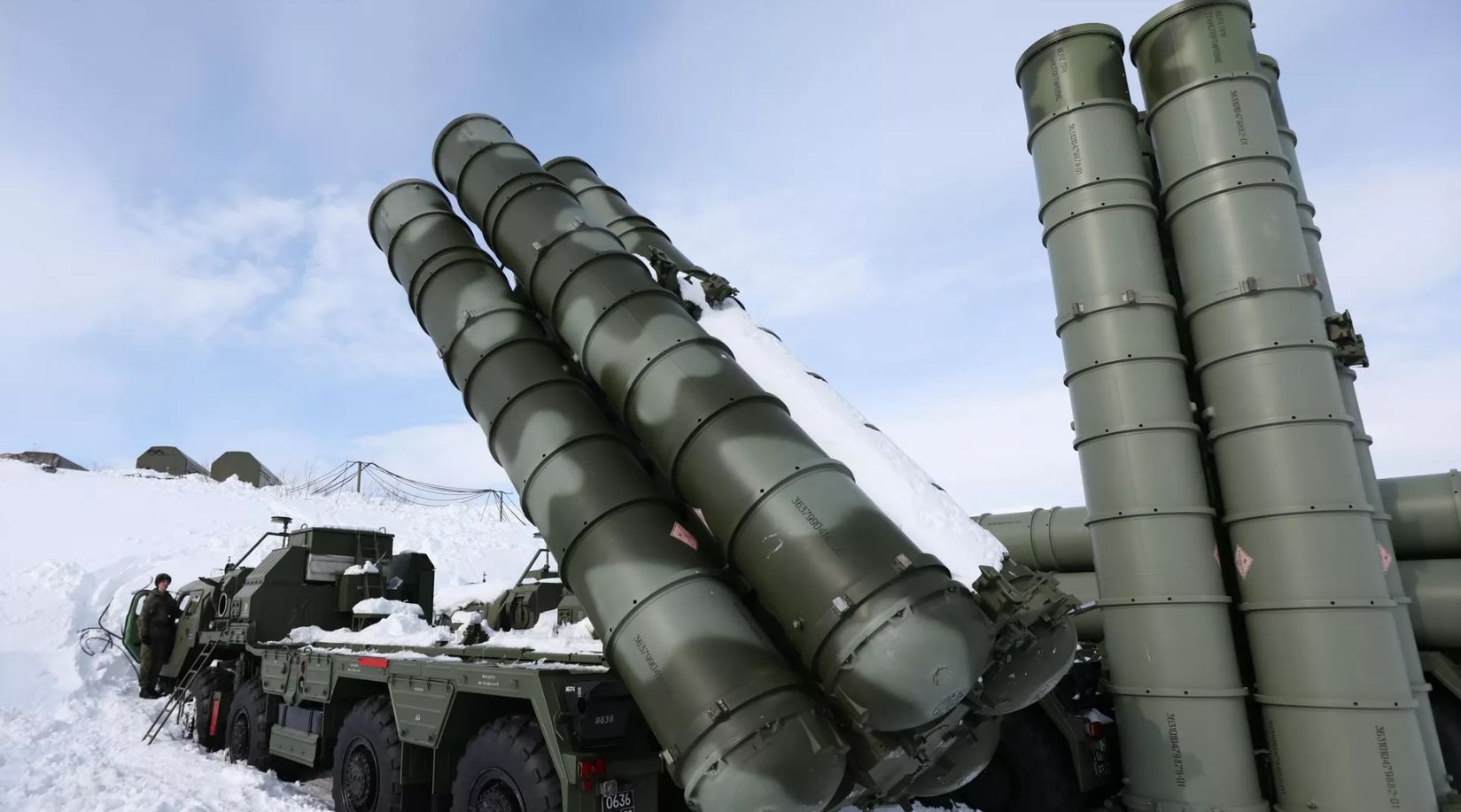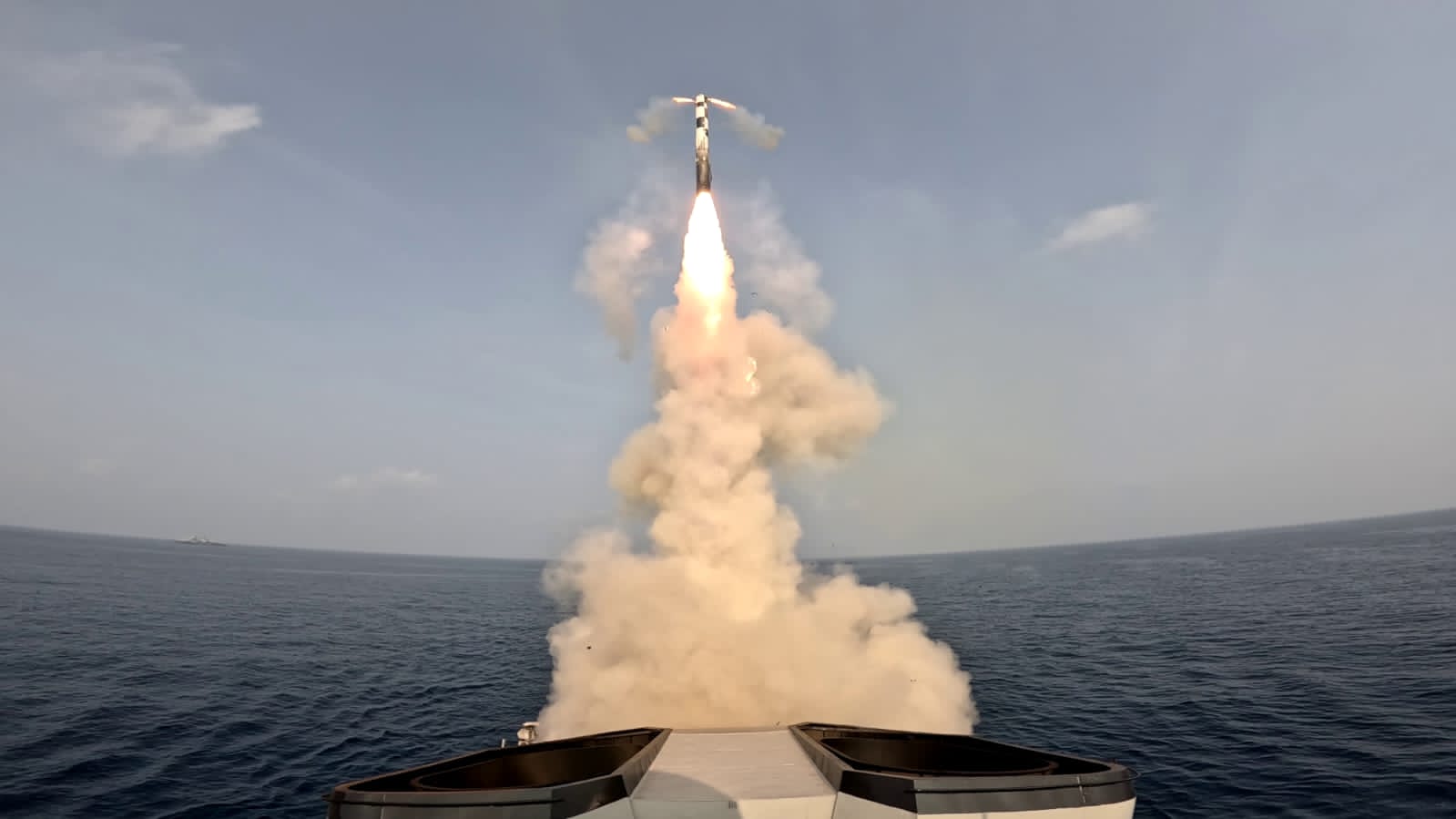Prime Minister Narendra Modi’s visit to Greece in 2023 opened an avenue of cooperation between the two countries. There have also been talks about collaboration in the defense sector.
Recently, the voices in Greek media have gotten stronger to procure a “truly strategic weapon from India” – the BrahMos supersonic cruise missile – to counter Turkey’s nefarious designs in the Aegean Sea and the Sea of Crete.
Prime Minister Modi’s visit to Greece was the first by an Indian prime minister in four decades since Indira Gandhi’s visit to the country in 1983. The Greek Prime Minister Kyriakos Mitsotakis reciprocated the visit to India in February 2024.
The Greek media has been making a strong case for acquiring the BrahMos anti-ship missile to bolster the country’s naval power in the entire geographical range between the Aegean, Crete, and Cyprus.
The Greece City Times, in an article, contended: “Equipping the Eastern Aegean islands (which Turkey considers as its own and illegally occupied by the Greek state) with Brahmos land-sea arrays, combined with their long range and a short distance from the Asia Minor coastline, would mean minimal reaction time on the radars of Turkish naval ships, especially in conditions of missile saturation from mass firings from Greek Brahmos coastal defense arrays deployed on the Eastern Aegean islands.”
Two Greek academics have also stirred debate around the acquisition. Emmanuel Marios Economou and Nikos K. Kyriazis of the University of Thessaly advocate for acquiring the BrahMos cruise missile system developed jointly by India and Russia.
Economou and Kyriazis argue that the deployment of BrahMos missiles on Greece’s eastern Aegean islands would create a “denial and prohibition of maritime access” for the Turkish Navy.
The academics assert that BrahMos offers a cost-effective solution compared to traditional large naval vessels, which they argue are increasingly vulnerable to advanced missile systems. They estimate that a single BrahMos missile will cost around $3.5 million, making a package of 150 missiles with launchers and radars much cheaper than a comparable naval force.
BrahMos is a modification of Soviet-era anti-ship missiles (Oniks) developed by the Reutov Design Bureau in the late 1980s. The name is derived from India’s Brahmaputra and Russia’s Moskva rivers.
The first test launch was conducted on June 12, 2001, at the Chandipur range in Odisha, India, and subsequently, the missiles began production at enterprises in both countries.
There has been great interest from foreign countries in BrahMos – and there are regulations already in place.
An in-principle agreement was reached on the potential export to third nations back in 2016. Potential users may include the Philippines, South Korea, Algeria, Greece, Malaysia, Thailand, Egypt, Singapore, Venezuela, the UAE, Chile, South Africa and Vietnam.
BrahMos is technically a ramjet-powered supersonic cruise missile with a solid propellant booster that can be launched from land-based canisters, submarines, ships, and now aircraft. It travels at speeds of Mach 2.8 to 3.0 but is being upgraded to travel faster than Mach 5.0. for the hypersonic variant.
One of its special features is its ability to fly extremely close to the ground to avoid missile defense systems. In fact, during the terminal phase, the missile can fly as low as 10 meters to the ground. The missile relies on active radar seeker or inertial guidance in the final phase.
So far, India has inked a deal to export BrahMos to the Philippines, but several countries have expressed interest. Should the deal with Greece materialize, the deployment will be interesting to follow as Turkey has purchased the Russian S-400 surface-to-air missile system.

Countering Turkish Provocation With BrahMos
The news outlet notes that the system can target enemy warships up to 300 kilometers from the coast, thus covering a very large geographical area. It asserts that the presence of BrahMos missiles in the region would make the work for the Greek Armada easier.
“By extension, such a scenario would create conditions for the Turkish Navy to deny and prohibit maritime access to the Aegean archipelago or secure access with very high losses, reducing the total size of the Turkish Navy’s surface units. Thus, the task of the Greek war fleet in defense of our critical islands would be made easier,” it notes.
Another assertion that the article makes is that the BrahMos packs more destructive punch than subsonic missiles such as the US’ notorious Tomahawk cruise missile or the Ukrainian naval Neptune missile that sank the Russian fleet’s flagship, the famous missile cruiser Moskva in Snake Island in April 2022.
The “Blue Homeland” is an irredentist concept that asserts Turkey’s claim over vast sections of the Aegean and Mediterranean seas. This concept encompasses Greek and Cypriot maritime borders as well as hydrocarbon deposits, all of which Turkey seeks to assert claim over. The term “Blue Homeland” was first coined in 2006 by senior officers of the Turkish Navy.
Even though there had been some thawing between the two countries following deadly earthquakes in 2023, recently, Turkey has been upping the ante. The “Blue Homeland” concept extends Turkey’s territorial aspirations beyond its existing borders.
Initially a fringe idea among anti-Western elements within the Turkish Navy, it has now gained popularity as a nationalist aspiration championed by President Recep Tayyip Erdoğan.

At the beginning of 2024, the Turkish President referred to the “Blue Homeland” while speaking at a celebratory event in Ankara on the 97th anniversary of the establishment of the Turkish intelligence agency MIT; he made clear the intentions of the Turkish high strategy, stating, among other things: “Our strong will to protect our Blue Homeland from the Aegean to the Black Sea and the Eastern Mediterranean…”
The “Blue Homeland” concept has the potential to disrupt the NATO alliance in the future.
In another incident in January 2024, the Republic of Cyprus issued a NAVTEX (MA23-017/24) announcing the conduct of maritime surveys in a survey area very close to where the potential Greek Exclusive Economic Zone (EEZ) meets the demarcated Cyprus EEZ.
Turkey responded within a few hours by announcing that it was staking claim over the area and asserting that the competent Turkish authorities must coordinate all regional research activities.
In such a scenario, the Greek article suggests: “The Indian-made Greek BrahMos could become the nightmare of the Turkish navy, but also of the treacherous Turkish designs of the “Blue Homeland” and the non-existent basis of the international law of the sea, Turkish-Libyan pseudo-“pact” delimiting maritime zones!”
India has a strained relationship with Turkey. Ankara’s constant needling of New Delhi over Kashmir issues can nudge India closer to Greece, and BrahMos in the Aegean Sea might soon become a reality.
- Ritu Sharma has been a journalist for over a decade, writing on defense, foreign affairs, and nuclear technology.
- The author can be reached at ritu.sharma (at) mail.com
- Follow EurAsian Times on Google News




